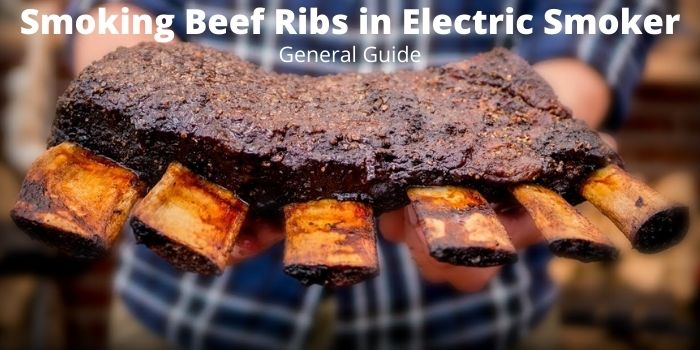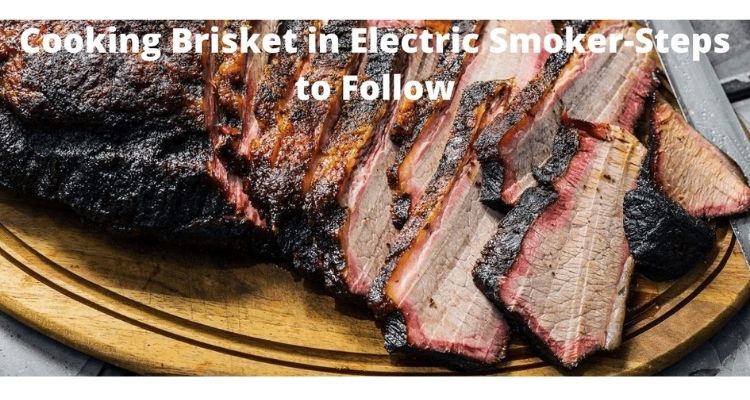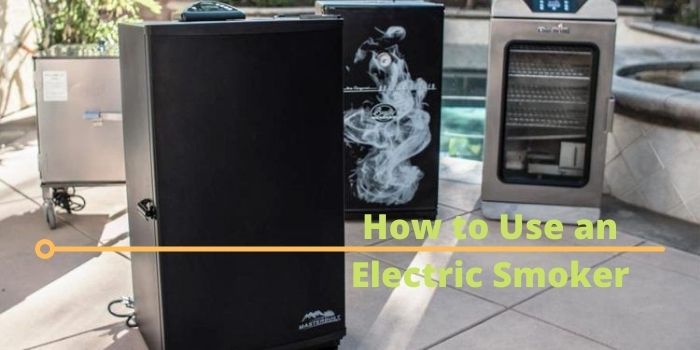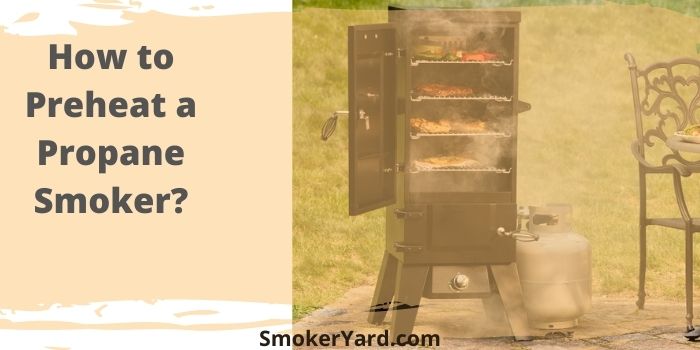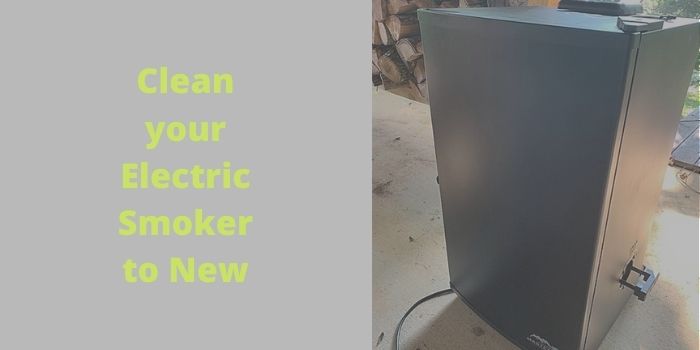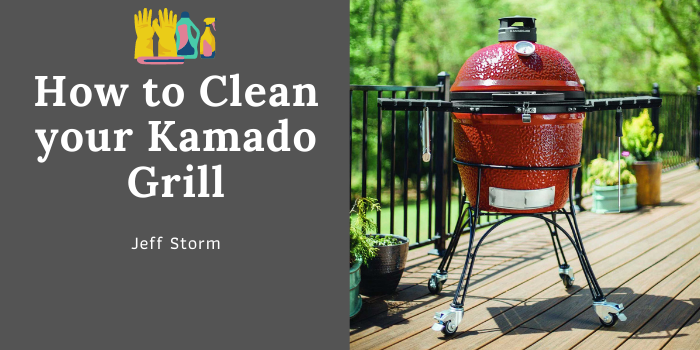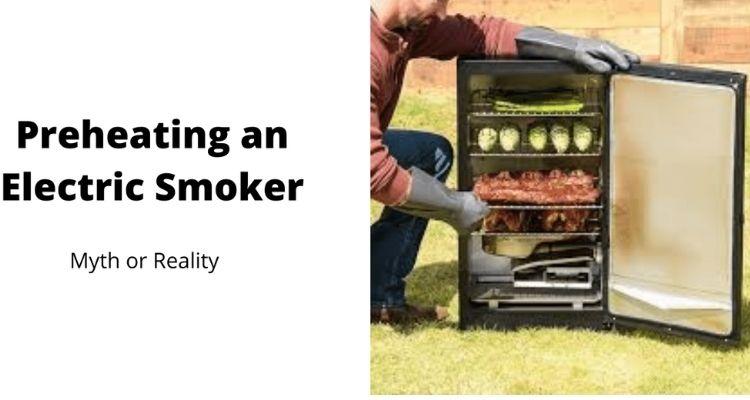Smoking Beef Ribs in Electric Smoker
Smoking Beef Ribs in Electric Smoker for dinner would be time-consuming, but besides, it is a fact that it would surely result in some juicy, tender, and mouthwatering stuff that would melt in your mouth in no time. And there shouldn’t be any compromise when it comes to the taste so, opting for the excellent quality ingredients will make it more delicious.
You can cook the beef ribs either by using a charcoal smoker and electric smoker. But using the electric smoker to cook the beef ribs is so much easier than the charcoal smoker . If you are willing for a push-button convenience, go for an electric smoker. All you have to do is turn on the switch and select the temperature; the rest is up to the smoker to maintain the temperature till the end.
Simultaneously, the charcoal smoker has to be set up and needs your attention towards the temperature after some time. However, the food steamed in the electric smoker is less rich in smoky flavor than the charcoal smoker but still tastes pretty good. I mean, who would want to struggle that much to set up the charcoal smoker. But if you do, there is no doubt the struggle would turn out to be worthy.
Unlike smoking brisket in electric smoker, smoking beef ribs in electric smoker is a bit tricky.
In the article, you will share all the methodology that would result in some flavorful smoked beef ribs. However, we are not taking about the recipe but the general procedure.
How to cook Beef Ribs in Electric Smoker
1. Pre-Requisites
- 5lbs Beef Ribs
- A carving knife
- An electric smoker
- A wood chunk of your choice
- A meat thermometer
- An injection needle for meat
- Thick Aluminum foil
- A cutting board
- Pair of Hand Gloves
2. How to Select Beef Ribs for Smoking in Electric Smoker
Before heading to smoke beef ribs in electric smoker you must have a fine knowledge about the beef ribs. You may not be a butcher but for the time being you must have a butcher’s mind set. Digging deep to conquer your cooking and smoking passions is the ultimate pre-requisite for your goal.
Generally there are two basic types of beef ribs totally rely on the cut of the ribs.
Back Ribs
The cuts belong from the steer’s backside; the area leading to the spine is called the back rib. Back ribs are obtained by removing the rib roast (Prime Rib) from its bones.
The ribs roast is very costly as compared to the other cuts. For this reason, most of the meat removed from the prime rib will remain with the roast, leaving behind very little on the rib bones.
Almost all the meat of the back ribs will remain within the bones. These ribs are smaller as compared to the spare ribs and can be cooked fast. The back ribs are about 6 to 8″ in length with a curved bone.
Smoking low and slow the back ribs produces tender results in most cases.
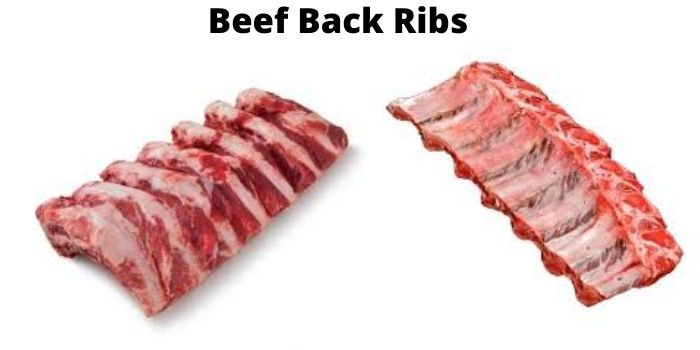
Short Ribs
Short Ribs are further categorized into Plate Shot Ribs and Chuck Short Ribs.
The Plate short ribs are mostly the sixth seventh and eighth rib of the beef. You can get them as a distinct individual rib but don’t recommend so, for it will lose all the juice and there is a chance of complete dry out of your food.
In case they bought in full, I mean the three without separation, the results are excellent. As it has more fat and connecting tissues, so it will produce more flavorful and delicious results.
On the other hand, the chuck short ribs mainly comprise of the first to the fifth rib. You can get them in a bundle of 4 ribs.
These Ribs containing a fair, hard fat, these ribs have a drum of meat at one end of a bone. When compared with the taste, these ribs are no way nearer to the Short Plate ribs. It produces a bit of hard meat.
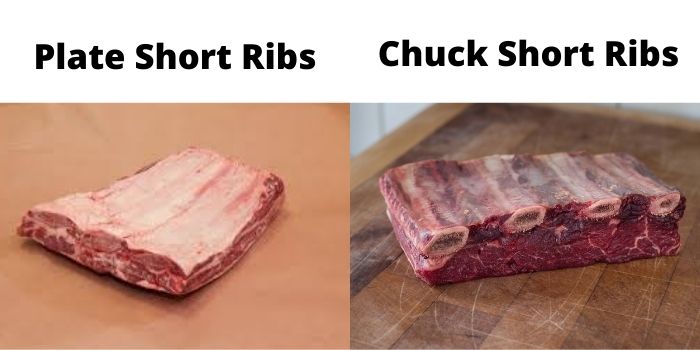
3. Trimming the Ribs
After a fair selection of Ribs, the next steps comes for the trimming. It is not a mandatory step as some ribs packages contains ready to smoke condition while some may need some trimming alterations.
You can use a sharp knife to trim the beef ribs. You can remove the silver skin off the top of the short ribs. This is not fat; but can be challenging and chewy, so gently cut the silver skin using a sharp filet or boning knife.
You will find a thin membrane that will reveal the appealing beef. You don’t need to cut the membrane off the side of the bone, unlike pork ribs. Leave it there so that the meat can hang on to the ribs.
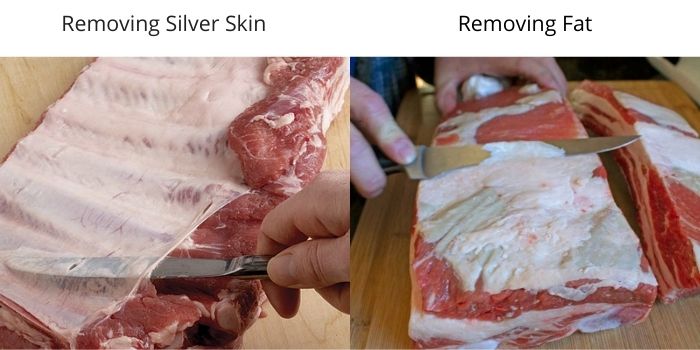
4. Storing the Ribs
So, you trimmed the beef ribs and want to smoke it some other day, what to do? No worries, you can easily store the beef ribs in the refrigerator, not in the freezer. Use a container to refrigerate the beef ribs for not more than 5 days. However, keeping it for more than 5 days won’t make it go stale, resulting in a taste change. You won’t get the taste of some fresh beef ribs. Once you make your mind to smoke the beef, take it out and start marination.
5. Rubbing
For marinating, as the marinade’s acids can react with metal, the container you are using for marinating should not be made of metal. Use a tub of plastic or glass or a big zip-lock case. After using it, discard the bag and do not reuse it.
For better hygiene, use gloves to rub the beef ribs. To get those hot and sweet flavors, try adding some hot sauce. Rub the ribs thoroughly with some sweet heat rub, salt, and pepper. Although the smoke and beef will provide much of the flavor, seasoning rubs will mix well with the wood’s natural flavor.
Do rub with hard hands so that it gets into the meat as much as possible.
Wet or dry, soft or spicy, or just plain pepper and salt. Whatever you pick, for a reason, bear in mind that it’s called a rub: don’t be afraid to get hands-on and work the rub into the meat surface to get the most flavor. You can rub the ribs before you start smoking or hours in advance and refrigerate them.
When they are marinated, make sure to keep the ribs in the refrigerator. At room temperature or outdoor conditions, do not leave them out.
6. Preheating
You can preheat the electric smoker from a cold temperature to its optimum temperature if you want. However, some people don’t preheat the smoker, which doesn’t have any side effects.
Preheating the smoker can turn out to be beneficial and cause trouble as well. Preheating can disinfect your smoker of germs and can develop a warm environment for your food. As you preheat the smoker, you will have to wait for the temperature to settle down between 225 and 250 degrees before introducing the beef ribs. You should add wood chips to the cold smoker before turning it on.
Be sure to add just half a cup of your favorite wood chips at a time. When you avoid generating smoke in the previous batch, that’s when you can add more.
Never introduce foil to the racks, even it might seem to decrease the cleaning time because doing so would only prevent proper heat circulation.
7. Injecting Flavors
Just before you place the beef ribs in an electric smoker, you can use different flavors to be injected inside the rib. Those flavors may be the Worcestershire sauce, the apple juice, the garlic and herbs solution, etc.
To stop dotting the meat with the holes and making unappetizing-looking streaks, inject with or in the grain’s direction. In the middle of the muscle fibers and bundles, insert the needle.
To ensure an even distribution of liquid, inject every 1-2 inches in a grid pattern across the entire meat piece. Depress the plunger as the needle is removed. Mop up the surplus liquid. Be warned, a lot is going to happen, and this is a messy exercise.
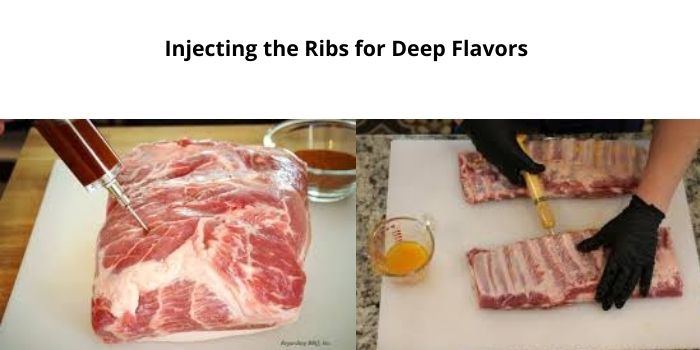
8. Smoking Process
As your beef rib gets ready to be smoked, head towards the best electric smoker you have and place the ribs inside. Lower temperatures, such as 225 or 250 degrees, and the use of fruitwood or oak are found to be essential. You compliment for the beef flavor in that way will not make it over-powered. Depending on how thick the meat is, it can also take hours to cook, like five hours for a five lbs ribs or more.
Spray
The apple cider vinegar and apple juice spritz can be sprayed when the beef ribs are cooking. The acidic taste complements the beef very well. It would help if you spritzed it every 30 minutes or so after the first hour of cooking. So be prepared to spend time around your cooker and make sure you pass the time with a good beer or the wine you can use for the bath.
Temperature Settings
One full rack of ribs of 5lbs would require 4 hours to be steamed. Any temperature below 140 degrees is a big NO. Since this is the upper range where bacteria can expand and multiply. You need to know if you hear of anyone smoking meat at 165 degrees, whether that is the meat’s internal temperature (which could be the recommended temperature of ‘doneness’ for ribs) or the temperature of the smoker? In my view, the second big NO is above 275 degrees because of the factor that the higher the temperature you go, the more comfortable you make smoked ribs that are finished (or overdone) without being tender. The drier these ribs appear to be.
A reasonable range is between 225 and 275 degrees for low and slow. Between 240 and 260 degrees will be an even narrower range, but we need to keep two things in mind.
- You can never hold a smoker at one temperature; that’s not the purpose.
- There’s no reason to get irritated with the temperature’s regular fluctuations
Be sure about the temperature inside the smoker. Use a digital thermometer to monitor the temperature, which should not be more than 225 degrees to 300 degrees.
Wrapping in Foil
Although it is possible to obtain a flavorful touch of smoke in an hour or less, more extensive and less tender cuts will usually have to be smoked for up to 12 hours or more. It’s OK to remove beef from the smoker after three hours, cover it in foil, put it in a cool, dry position and continue smoking later if you can’t set aside a whole day at once.
When you see the color for (a deep, red, mahogany sheen), then wrap it, then let the meat baste on its juices and cook the collagen out. Typically at about the 3-hour mark, this will happen. You may add the beef for the moisture and flavor to a beef broth/wine bath as well. I like the broth and the wine combination for flavor.
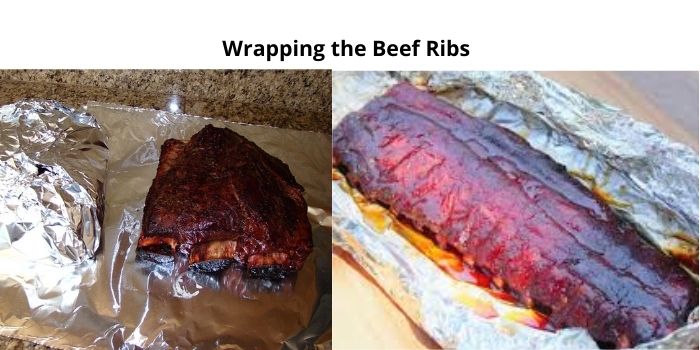
9. Carving and Serving
This is where it pays off with all the diligence. Like butter, the probe goes in and measures at 203°F. Leave your tender ribs for a minimum of about 30 minutes to rest. You can quickly leave them in a faux cambro for a few hours if you want to serve them at dinner.
When your ribs have rested, with a decent slicing knife, slice those delicious ribs into individual ribs. Beef ribs such as these don’t need any barbecue sauce, but if you like the sauce, choose some of the Texas mop juice that fits the beef very well.
